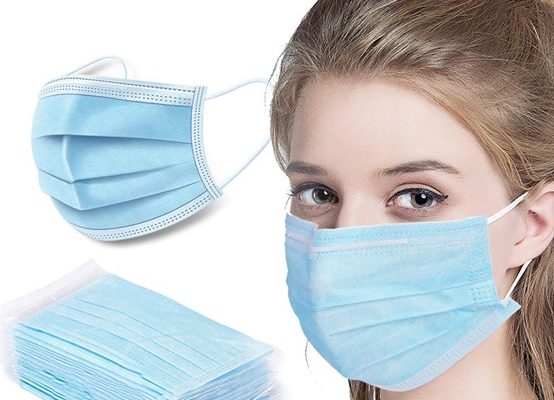The corona crisis dominates our world affairs. The main focus of public efforts right now is to curb the spread of COVID-19. Many wonders: How can I best protect myself from infection?
Many people resort to the use of respiratory masks, which are urgently needed for hospital staff in terms of occupational safety and are sometimes offered for horrendous sums on the Internet.
A 3ply medical mask per se is not a guarantee for the wearer to be protected against infection with corona. Nevertheless: It is better than no protection and also protects the surrounding area. Due to the scarce availability, the trend is now towards making your face mask.
Which masks offer which protection?
A distinction is made between mouth and nose protection (MNS) made of paper or fleece and so-called FFP masks (“Filtering Face Piece”) made of hardened paper or fabrics. Covers with protection class FFP2 provide adequate protection against viruses with a maximum permeability of six percent, FFP3 masks even filter up to 99 percent of the air pollution. Still, breathing is difficult with them in the long run.
“An MNS protects the wearer less than the environment in the event of asymptomatic infection of the wearer, even if this has not yet been scientifically confirmed,” explains Martin Kunitschke from compared.org. At least this prevents larger droplets from being rejected into the environment. In the best case, your smear infection can be avoided by not touching your face directly.
In the worst case, she was wearing a false sense of security, which would neglect additional essential hygiene measures. FFP-3 masks, in particular, offer sufficient protection but are necessary for hospital staff who have direct contact with infected people.
Mouth and nose protection (MNS): only protects the environment and is required by clinic staff for external security.
- FFP2 / FFP3 mask without valve: protects both the wearer and the environment – indispensable for clinic staff.
- FFP2 / FFP3 – mask with valve: only protects the wearer – needed in everyday hospital life.
- Self-made mask made of cotton: primarily protects the environment and also slightly the wearer – not for intensive care, doctors sometimes sew masks themselves.
- Scarf/neckerchief: moderate protection for wearer and environment, larger droplets are stopped.
Why are respiratory masks scarce?
A large part of the respirators are produced in Asia and especially in China. China’s economy has been brought to a minimum after the Coronavirus outbreak and has only recently been revived. Also, increased purchases by private individuals or traders who wanted to profit from the situation led to bottlenecks and sometimes horrendous usury prices on the Internet. eBay has already responded to this development and banned the sale of respirators and disinfectants on its platform.
Meanwhile, the German government has ordered the hospital masks to be reprocessed three times to significantly reduce wear. Previously, masks were only allowed to be worn once and for around two hours. Many companies make a virtue of the current emergency and join forces or convert their production partly or completely to the manufacture of respiratory masks.
What are the alternatives to protective masks?
Despite the global shortage of respiratory masks, Austria and Jena have recently become the first German city to call for a mask when shopping. However, self-sewn masks, scarves, or scarves are also accepted. On the Internet, you will find plenty of instructions on how to make your face mask.
Their effectiveness mainly depends on the density of the fabric used – we recommend boiling-resistant cotton fabric and additionally sewn-in non-woven fleece. A flexible nose piece also increases protection. A tight scarf can also be useful.
“If you blow through the fabric and feel no drafts on the other side, the scarf or the shawl is tight enough and suitable as a mouthguard,” explains Martin Kunitschke from compared.org. Since any kind of mouthguard is primarily used for third-party protection, according to Christian Drosten, the Charité virologist, the spread of the virus can at least be slowed down, thereby effectively reducing the burden on the health system.













Comments